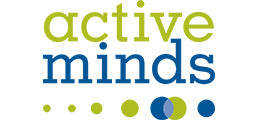No, “Alexander Technique” is not code for standing in line for hours waiting or Hamilton tickets, although it will improve your posture! Alexander Technique (AT) is a well-researched yet not-so-well known process for re-educating our movement habits in order to improve the way we function, reduce pain, and move more naturally.
My Experience with Alexander Technique
I know a bit about Alexander Technique from personal experience. I started AT lessons to support shoulder injury rehab. I was doing a lot of physical therapy shoulder exercises. A lot! My AT teacher, Jennifer Roig-Francoli, warned me in my first lesson: “Pay attention to how you are doing them. Make sure you are not over-tensing muscles unnecessarily.” I knew she was right. There were days when I would mindlessly do exercises just to get them over with. This would lead me to have sharper pain afterwards instead of the expected soreness.
Tighter is Not Always Better
When we perform our core workouts, it is easy for us to focus on an end result, such as six-pack abs, without paying attention to what we are doing in the process. In AT, this is called end-gaining, but pain does not always equal gain. According to Australian Physiotherapist Peter O’Sullivan, many people subscribe to the belief that pre-bracing and pre-stiffening your back to engage core muscles during workouts helps protect your back during workouts and can even cure lower back pain.
However, O’Sullivan’s studies with patients reveal the opposite. Too much stiffening and tightening produces spinal compression, creating more pain. Massively overworking back and pelvic floor muscles can even cause stress fractures. He finds very little evidence that pre-tensing is normal. In fact, O’Sullivan states that this belief and fear about the vulnerability of backs has done damage, whereas a positive mental belief about the natural strength of the spine would produce healthier habits.
How This Myth Developed
University of Queensland researchers theorized in the 1990s that the delayed firing of certain abdominal and back muscles, particularly the transverse abdominis and multifidus, is the culprit behind chronic low back pain. This belief caused personal trainers and Pilates practitioners to adopt a “zip and hollow” technique of lifting the pelvic floor to activate the transverse abdominis, drawing the navel toward the spine.
How Alexander Technique Helps
Professor O’ Sullivan developed a treatment method called cognitive functional therapy, factoring in a patient’s beliefs, fears, movement behaviors, and holistic lifestyle to diagnose and treat back pain. Similarly, Alexander Technique helps people learn to move with more ease through greater self-awareness of mind and body as a whole. This includes being aware of our head, neck, and spine, in addition to our core.
This kind of awareness can be easily developed using Core Flytes since they require coordinated movements involving multiple muscle groups working in concert. This whole body muscle coordination enables us to improve muscle, balance, and stability through dynamic activity rather than isolated exercises.
Tips for Your Next Workout
Next time you use your Core Flytes, or do any kind of workout, consider the following Alexander Technique-inspired tips:
1. Focus on quality over quantity. Joseph Pilates emphasized this, too.
2. Give your inner core muscles a chance to strengthen by not tightening your outer muscles. More on how to do that with a plank here.
3. Do not force fixed postural positions. Instead, trust your innate postural reflexes.
4. Be aware that isolated muscle weaknesses are probably part of larger faulty unconscious habits of movement. The shoulder pain from my exercises are a prime example.
5. Not sure where to start? Jennifer Roig-Francoli advises asking yourself the following questions below.
a. Are my head and neck free? This primary control dynamic is pivotal to healthy movement in the rest of the body.
b. Is my breath free?
c. Am I aware of the space above, in front, and behind me? This can inhibit our bodies’ tendency to compress
d. Read and hear more about these “Freedom Directions” here.
We’d love to hear from you. Feel free to share any thoughts or revelations you find after applying the above tips. Comment below or on our Facebook page or tweet us at @flytefitness.com.
Be Flyte Fit,
Dai Zhang
Contributing Writer, Flyte Fitness
P.S. DON’T FORGET TO SIGN UP FOR FITNESS UPDATES! CLICK THE BOX AT THE TOP OF THIS PAGE!
